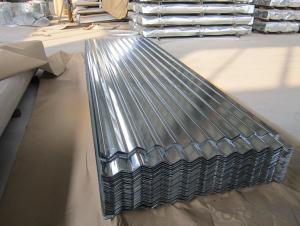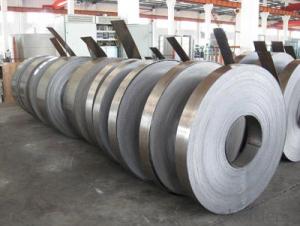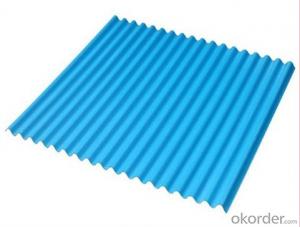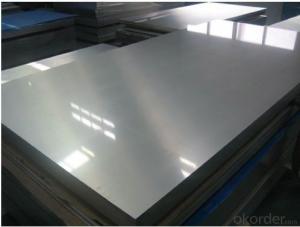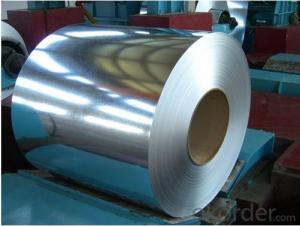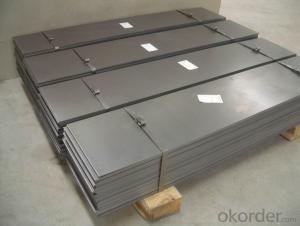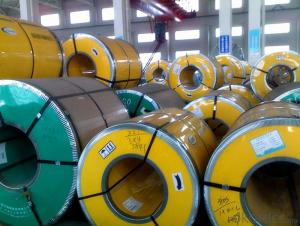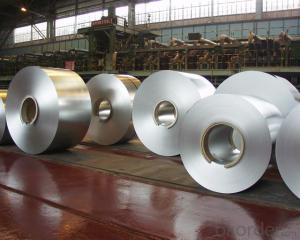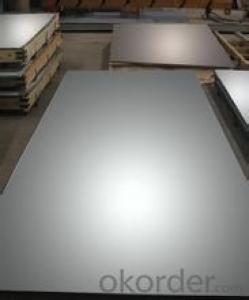Colorful Corrugated GI Galvanized Steel Sheet
- Loading Port:
- Shanghai
- Payment Terms:
- TT OR LC
- Min Order Qty:
- 25 m.t.
- Supply Capability:
- 20000 m.t./month
OKorder Service Pledge
OKorder Financial Service
You Might Also Like
Item specifice
Product Brief Introduction
Colorful Corrugated GI Galvanized Steel Sheet
Galvanized Corrugated Steel Roofing Sheet is formed by cold roll machine, using galvanized steel sheet or aluminum steel as the base material .Galvanized corrugated steel roofing sheet is featured with easy installation ,high strength ,more economic .( low cost )
Product Features
.Outlook Beautiful and novel, rich colors, flexible combination, can be used in different buildingto express special original architectural styles in life.
.Surface have been treated as galvanized and color coated.so it can anti-rain,anti- fire,anti-quake,So it has a long term life as 20-30 year and color just not fade.
. Light weight: easy to transport the material,short the time to finish the building,reduce worker's hard work,save much time and energy for human beings.
.Smooth surface treatment,the dust will be easy taken off by the rain.
. Environmental material,can be used many times,will do no hard to the our environment.
Product Specification
.Thickness:0.13mm to 0.8mm
.Length: 1m to 11.8m.
. Color: navy blue,white grey and any RAL colors.
. Certification: ISO9001:2000.
.Material : cold rolled galvanized steel coil.
. Standard: JIS,DX51D,SGCC,Q235. A653
. advantage: waterproof,light weight, high strength,best price.
. HS code: 7210700000
Packing Information (For 27.5 Tons heavy 20’Fcl)
. water proof paper packing in side
. plastic film Packing in middle
. steel sheet Packing out side
.several steel strip packing to fix the packing
Production Line & Package
FAQ
1. how many wave for per pcs
—— some wave is 8 ,same wave is 9 ,save wave is 11 ,it is up to your request
2. What is the MOQ for this products ?
—— Normally the MOQ is 25mt per size and per color .

- Q:How are steel strips protected against rust and corrosion?
- There are various methods to protect steel strips from rust and corrosion. One way is to apply a protective coating on the surface of the steel. This can be achieved through processes like galvanizing or painting. Galvanizing involves coating the steel with a layer of zinc, which acts as a sacrificial layer. Zinc is more reactive than steel, so it corrodes first and shields the steel beneath. This technique is highly effective, particularly in outdoor or high-humidity environments. Another commonly used method is painting. A layer of paint creates a barrier between the steel and the surrounding environment, preventing direct contact with moisture and oxygen. The paint can be formulated with additives that resist corrosion, providing even greater protection. In addition to coatings, corrosion inhibitors can also be used to safeguard steel strips. These are chemical compounds applied to the steel surface, forming a protective layer. Corrosion inhibitors work by either passivating the steel surface, reducing its reactivity, or by creating a film that prevents the penetration of corrosive substances. Proper storage and handling of steel strips are crucial in preventing rust and corrosion. This involves keeping the strips in a dry environment, away from moisture and corrosive substances. Regular cleaning and maintenance, such as removing any dirt or debris on the surface, also contribute to prolonging the steel's lifespan and preventing corrosion. In summary, a combination of protective coatings, corrosion inhibitors, and proper storage practices is vital to ensure the long-term protection of steel strips against rust and corrosion.
- Q:How are steel strips classified based on width?
- Steel strips can be classified based on width into three categories: narrow, medium, and wide. Narrow steel strips have a width of up to 600 mm, medium steel strips have a width ranging from 601 mm to 1500 mm, and wide steel strips have a width exceeding 1500 mm.
- Q:Can steel strips be used in the construction of storage tanks?
- Yes, steel strips can be used in the construction of storage tanks. Steel strips are commonly used to form the shell of storage tanks due to their high strength, durability, and resistance to corrosion. These strips can be shaped and welded together to create a robust and secure structure for storing various substances.
- Q:What are the different welding techniques used for steel strips?
- There are several welding techniques commonly used for steel strips, including resistance welding, fusion welding, and laser welding. Resistance welding involves passing an electric current through the steel strips to generate heat and create a weld. Fusion welding, on the other hand, involves melting the edges of the steel strips and fusing them together. Laser welding uses a high-powered laser beam to melt and join the steel strips. Each technique has its advantages and is chosen based on factors such as the thickness of the strips, desired strength of the joint, and production requirements.
- Q:Are steel strips used in the production of HVAC systems?
- Yes, steel strips are commonly used in the production of HVAC systems. They are often used for various purposes such as reinforcement, support, or as a component in the manufacturing of air ducts and other HVAC system parts.
- Q:What are the different methods for grinding steel strips?
- Grinding steel strips can be accomplished using various methods, depending on the desired results and project specifications. Here are some commonly employed techniques: 1. Surface grinding entails utilizing a horizontal rotary table machine with a grinding wheel to eliminate material from the steel strip's surface. This approach is ideal for achieving a smooth and flat surface finish. 2. Blanchard grinding, a variation of surface grinding, utilizes a vertical spindle machine with a rotating magnetic chuck to remove material. It is particularly effective for grinding large steel strips or parts with high stock removal rates. 3. Centerless grinding involves feeding the steel strip between two grinding wheels, one stationary and the other rotating. This method is often used for grinding cylindrical steel strips with a consistent diameter. 4. Belt grinding employs a sanding belt embedded with abrasive particles to remove material from the steel strip. It is commonly used for deburring, polishing, and shaping the edges of steel strips. 5. Precision grinding relies on specialized grinding machines and techniques to achieve extremely tight tolerances and precise dimensions. This method is preferred for high-precision applications where accuracy is of utmost importance. 6. Cylindrical grinding entails using a cylindrical grinder to grind the outer surface of the steel strip. This method is commonly used for producing cylindrical steel strips with specific diameters or achieving desired surface finishes. These examples represent a small sample of the various grinding methods available for steel strips. The selection of a suitable approach depends on factors such as desired outcomes, project specifications, and the type of steel being processed. It is crucial to carefully consider these factors and consult with professionals before choosing a grinding method.
- Q:How are steel strips processed for waterjet cutting?
- Steel strips are typically processed for waterjet cutting by first ensuring that the strips are clean and free of any debris. Then, they are securely clamped or fixtured onto a waterjet cutting table. The waterjet machine is programmed with specific cutting parameters, such as cutting speed and pressure, based on the thickness and type of steel being cut. The waterjet nozzle moves along the designated cutting path, delivering a high-pressure jet of water mixed with abrasive particles to precisely cut through the steel strips. This process allows for accurate and intricate cuts to be made on the steel strips without any heat-affected zones or distortion.
- Q:How are steel strips used in electrical applications?
- Steel strips are commonly used in electrical applications due to their excellent conductivity and durability. These strips are often used as conductive pathways, allowing electrical current to flow through various components in a circuit. They can be used as connectors or terminals in electrical devices, providing a reliable and efficient means of transferring electricity. In transformer cores, steel strips are used to create laminations that enhance the magnetic properties of the core. These laminations reduce energy losses by minimizing eddy currents, which can occur when alternating currents flow through solid metal objects. By using steel strips, the core's magnetic field is concentrated, resulting in improved energy efficiency. Steel strips are also used in circuit breakers and fuses, where they help to control the flow of electricity and protect against short circuits or overloads. These strips are designed to melt or break when excessive current passes through them, thereby interrupting the circuit and preventing damage to the electrical system. Additionally, steel strips can be found in electrical motors, where they are used as laminations in the stator and rotor cores. These laminations reduce energy losses caused by magnetic hysteresis and eddy currents, resulting in more efficient motor operation. Overall, steel strips play a crucial role in various electrical applications, providing conductivity, durability, and magnetic properties necessary for the efficient and reliable flow of electricity.
- Q:What are the different grades of steel used for strips?
- The different grades of steel used for strips can vary depending on the specific application. Some common grades include low carbon steel (such as AISI 1008 or 1010) for general-purpose strips, high-strength low alloy (HSLA) steel for stronger and more durable strips, stainless steel for corrosion resistance, and tool steel for specialized cutting or shaping strips.
- Q:What are the safety protocols for handling steel strips in a warehouse?
- The safety protocols for handling steel strips in a warehouse typically include wearing appropriate personal protective equipment (PPE) such as gloves, safety shoes, and eye protection. Workers should be trained in proper lifting techniques to avoid back injuries and should use lifting equipment like cranes or forklifts, if necessary. Steel strips should be stacked and stored securely to prevent them from toppling over and causing injuries. Regular inspections of the storage area should be conducted to identify any potential hazards or damage to the strips. Overall, the key safety protocols involve proper training, PPE usage, secure storage, and regular inspections to ensure a safe working environment.
1. Manufacturer Overview |
|
|---|---|
| Location | |
| Year Established | |
| Annual Output Value | |
| Main Markets | |
| Company Certifications | |
2. Manufacturer Certificates |
|
|---|---|
| a) Certification Name | |
| Range | |
| Reference | |
| Validity Period | |
3. Manufacturer Capability |
|
|---|---|
| a)Trade Capacity | |
| Nearest Port | |
| Export Percentage | |
| No.of Employees in Trade Department | |
| Language Spoken: | |
| b)Factory Information | |
| Factory Size: | |
| No. of Production Lines | |
| Contract Manufacturing | |
| Product Price Range | |
Send your message to us
Colorful Corrugated GI Galvanized Steel Sheet
- Loading Port:
- Shanghai
- Payment Terms:
- TT OR LC
- Min Order Qty:
- 25 m.t.
- Supply Capability:
- 20000 m.t./month
OKorder Service Pledge
OKorder Financial Service
Similar products
New products
Hot products
Hot Searches
Related keywords







